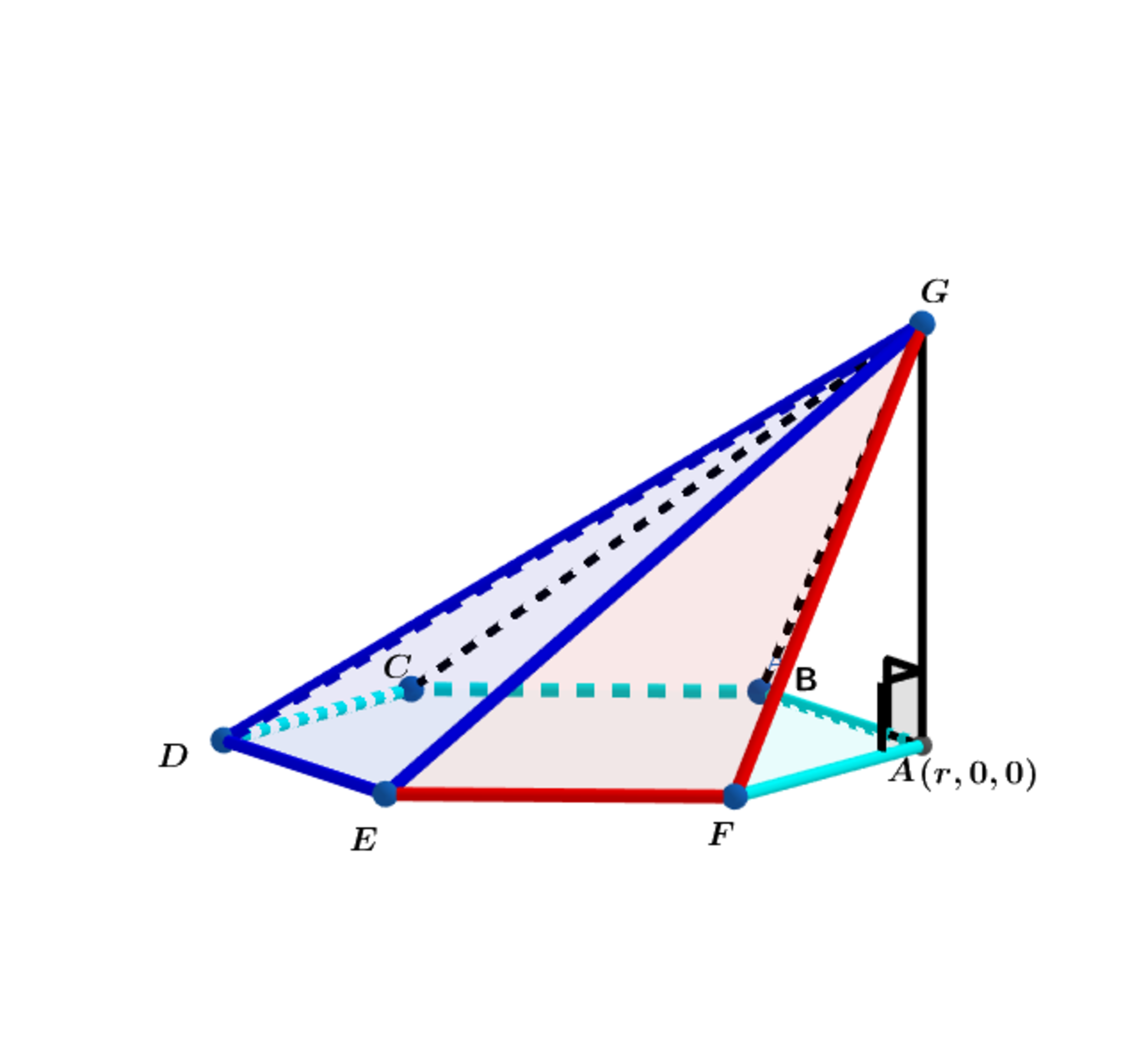Slant Hexagonal Pyramid 2.

In the oblique hexagonal pyramid above the base is a regular hexagon with side length and the height is .
Find the value of and that minimizes the congruent faces and when the volume is held constant.
Compute the measure of the angle(in degrees) between the two triangular faces and .
The answer is 135.
This section requires Javascript.
You are seeing this because something didn't load right. We suggest you, (a) try
refreshing the page, (b) enabling javascript if it is disabled on your browser and,
finally, (c)
loading the
non-javascript version of this page
. We're sorry about the hassle.
Let r be the length of a side of the hexagon and h = G A be the height of the hexagonal pyramid.
C : ( 2 r , 2 3 , 0 ) , B : ( − 2 r , 2 3 , 0 ) and G ( r , 0 , h ) .
u = − r i + 0 j + 0 k and v = 2 r i − 2 3 j + h k ⟹ u X v = 0 i + r h j + 2 3 r 2 k ⟹
d = 2 4 h 2 + 3 r 2 ⟹ A △ G C B = A △ G E F = 4 1 4 h 2 + 3 r 2 r
Let A = 4 1 4 h 2 + 3 r 2 r
The volume V = 4 3 1 r 2 h = k ⟹ h = r 2 4 3 ⟹ A ( r ) = 4 1 r 1 9 2 k 2 + 3 r 6 ⟹ d r d A = 2 r 2 1 9 2 k 2 + 3 r 6 3 ( r 6 − 3 2 k 2 ) = 0 ⟹ r = ( 4 2 k ) 3 1 ⟹ h = 4 3 k ( 4 2 k 1 ) 3 2
E D = − 2 r i + 2 3 r j + 0 k
E F = r i + 0 j + 0 k
E G = 2 3 r i + 2 3 j + h k
⟹ p = E G X E D = − 2 3 r h i − 2 1 r h j + 3 r 2 k
and
q = E G X E F = 0 i + r h j − 2 3 r 2 k
p ⋅ q = − 2 1 r 2 ( h 2 + 3 r 2 ) < 0 ⟹
cos ( θ ) = − ∣ p ∣ ∣ q ∣ ∣ p ⋅ q ∣ = − 4 h 2 + 3 r 2 h 2 + 3 r 2 = − 2 1 ⟹ θ = 1 3 5 ∘ .